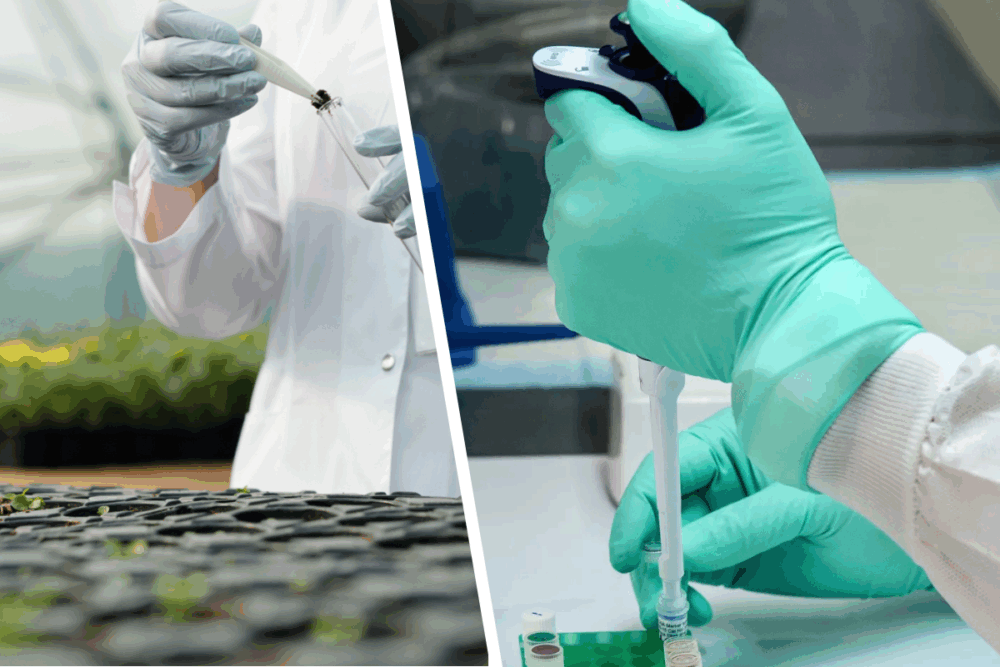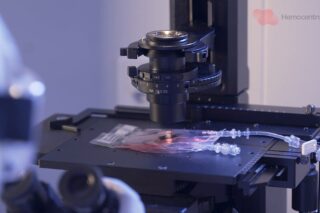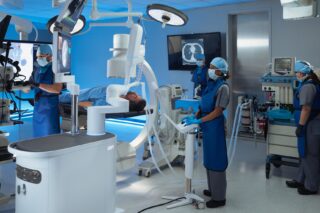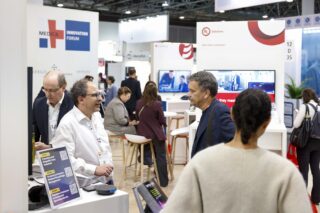Plant-based vaccine production emerges as a promising frontier. Leveraging the natural capabilities of plants, this innovative approach offers a sustainable, efficient, and scalable alternative to traditional vaccine manufacturing methods. During the Effervescence Forum we were invited to last week in Montreal, Canada, we met with Frédéric Ors, CEO of Aramis Biotechnologies to learn more about this new type of “vegan” vaccine that is poised to transform the landscape of biomanufacturing.
As demand grows for greener, more ethical healthcare solutions, plant-based vaccines—sometimes dubbed “vegan vaccines”—are emerging as a serious alternative to traditional methods. At the forefront of this biotech shift is Aramis Biotechnologies, a Quebec City–based startup founded in 2023. Building on the legacy of Medicago, Aramis is pioneering a new era of vaccine manufacturing using Nicotiana benthamiana, a wild tobacco plant known for its ability to rapidly produce high levels of proteins.
We sat down with Frédéric Ors, CEO of Aramis Biotechnologies, during Montreal’s Effervescence Forum to explore the company’s ambitions—and how plants may power the next generation of vaccines.
What is a plant-based or “vegan” vaccine?
Frédéric Ors: “A plant-based or “vegan” vaccine is a next-generation biotechnology that uses plants instead of bacterial or animal cells to produce proteins for therapeutic or preventive use. While traditional vaccine production relies on cell cultures or chicken eggs, this innovative approach harnesses the natural protein-producing power of plants. Interestingly, despite being the most prolific protein producers on Earth, plants have only recently entered the pharmaceutical production space.”
Why start with flu vaccines?
Frédéric Ors: “Seasonal flu vaccines are still primarily made using fertilized chicken eggs—a method developed in the 1940s. While it’s reliable and low-cost, it’s also outdated and resource-intensive. Plant-based systems offer a more modern, scalable, and sustainable alternative that could eventually replace egg-based production altogether. Starting with flu vaccines makes sense because the market is large, established, and in need of innovation.”
What kind of plant is used to make the vaccine?
Frédéric Ors: “We use Nicotiana benthamiana, a wild relative of tobacco native to Australia. It’s a lab-standard plant with unique characteristics that make it ideal for biotech applications. Unlike most plants, it doesn’t mount a strong defense response when stressed. That makes it remarkably efficient at producing foreign proteins—like the flu antigen we need for our vaccine.”
How is the vaccine produced from this plant?
Frédéric Ors: “The process is based on a natural symbiotic interaction between plants and a soil bacterium called Agrobacterium. This bacterium naturally transfers DNA into plant cells. We take advantage of that by dipping the plants—literally turning them upside down—into a solution containing Agrobacterium carrying the gene for the flu protein.
We apply a one-second vacuum that removes the air from between the leaf cells. When the vacuum is released, the solution rushes in, and the bacterium comes into contact with the cells. Within six days, the leaves start producing large amounts of the target protein—hemagglutinin, the key antigen used in influenza vaccines.”
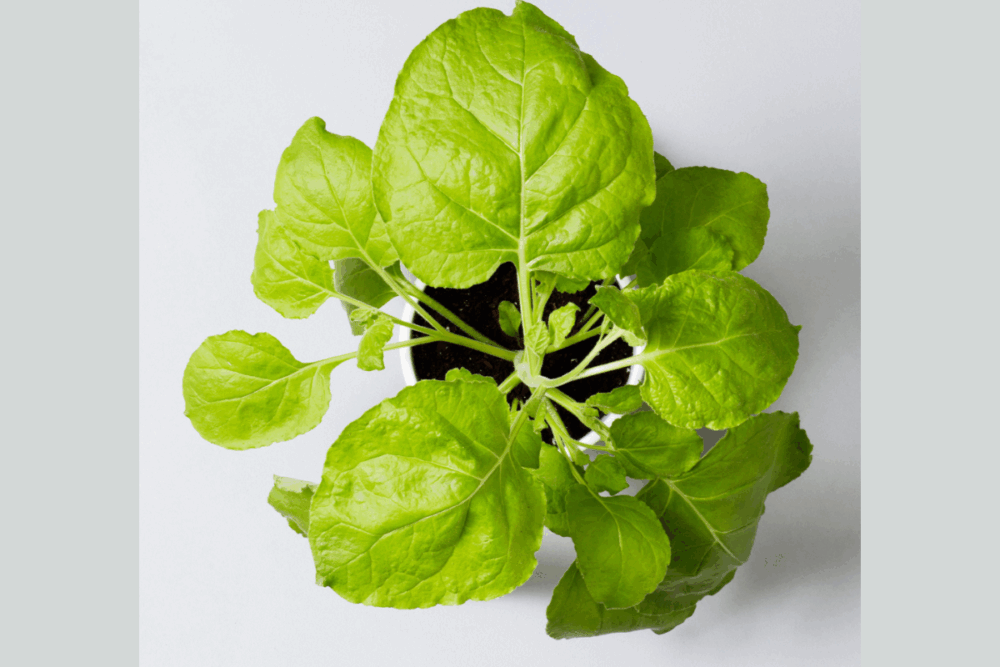
What makes plant-based vaccines better?
Frédéric Ors: “Three key advantages: speed, safety, and sustainability. Plant-based vaccines can be manufactured in as little as 20 days—matching the rapid turnaround of mRNA vaccines. However, unlike mRNA, they are protein-based, a technology with decades of proven safety and efficacy. This is particularly important for annual vaccines like flu shots, where minimizing side effects—like the more intense local reactions seen with mRNA—is critical to ensuring public acceptance. Additionally, because no animal products or live viruses are used, the process aligns with vegan principles and dramatically reduces the carbon footprint compared to egg-based methods.”
Does your vaccine have limited side effects, then?
Frédéric Ors: “Yes. Clinical trials have consistently shown that protein-based vaccines have a well-established safety profile. With plant-based vaccines, adverse effects are typically limited to mild, standard injection-site reactions. In contrast, egg-based production can trigger allergic responses in some individuals, and mRNA vaccines have been associated with stronger short-term side effects. The cleaner, more precise production process in plants also reduces the risk of impurities or unwanted immune responses.”
Is the traditional egg-based method responsible for most vaccine side effects?
Frédéric Ors: “Partially, yes. The egg-based method involves injecting a virus into embryonated eggs, allowing it to replicate, and then extracting and purifying the virus. Despite improvements, it’s still a relatively crude process compared to modern biotech. Egg allergies, while rare, are a concern, and the overall production method lacks the consistency and purity of a plant-based platform, which can purify the active ingredient to over 99%.”
Has this plant-based vaccine platform been approved?
Frédéric Ors: “Yes. A plant-based vaccine using this technology was approved in Canada during the COVID-19 pandemic. However, it never reached the market because the vaccine landscape was already saturated, and the parent company, Mitsubishi, exited the pharmaceutical space. The vaccine had progressed through Phase 1 trials at the same pace as mRNA counterparts. But by Phase 2, trial recruitment became difficult due to widespread vaccination, causing delays. By the time Phase 2 was completed, market demand had declined significantly, leading to its withdrawal. Aramis Biotechnologies has since acquired the assets to carry the technology forward.”
But there’s still a market for flu, right?
Frédéric Ors: “Absolutely. The demand for flu vaccines remains strong. In fact, this plant-based vaccine had already reached Phase 3 clinical trials just before the COVID-19 pandemic. Development was paused due to the global shift in focus, but the science was already quite advanced when we acquired it. That said, since the original version was developed in a U.S. facility and we wanted to make some key improvements, we decided to restart portions of the clinical development. We’re on an accelerated path—repeating Phases 1, 2, and 3 in roughly five years, instead of the typical 10 to 15.”
What improvements are you making?
Frédéric Ors: “The original process used greenhouse-grown plants, which creates challenges for scaling and global distribution. Reproducing the same growth conditions elsewhere is complex and not practical for pharma-grade production. So we’re moving to a vertical farming model—fully controlled, closed-environment systems that are easier to replicate globally. This shift will standardize quality, improve efficiency, and make the platform scalable. We’re also optimizing the production process to increase protein yield and overall productivity.”
Which population are you focusing on?
Frédéric Ors: “Our main target is older adults, particularly those 75 and older. That’s the group most vulnerable to flu complications and hospitalizations—and the one where traditional vaccines tend to be less effective. In earlier Phase 3 trials, our vaccine showed promising signs of superiority in this age group, making it an ideal focus for delivering better protection where it’s most needed.”
In a future pandemic—say from a virus similar to COVID—could you produce a vaccine in 20 days?
Frédéric Ors: “Yes. We have a contract with the federal government and continue the pandemic preparedness work originally established by Mitsubishi and Medicago. Our facility is ready. If a threat like H5N1 (currently a primary concern) were to emerge, we could respond very rapidly. In fact, we’ve already completed Phase 2 clinical trials for an H5 vaccine.”
Are your clinical trials conducted in Quebec?
Frédéric Ors: “The trials we’re planning will be conducted in Quebec. However, past clinical trials were global. In total, over 55,000 people worldwide have received vaccines produced with this plant-based technology, so we already have a substantial safety dataset.”

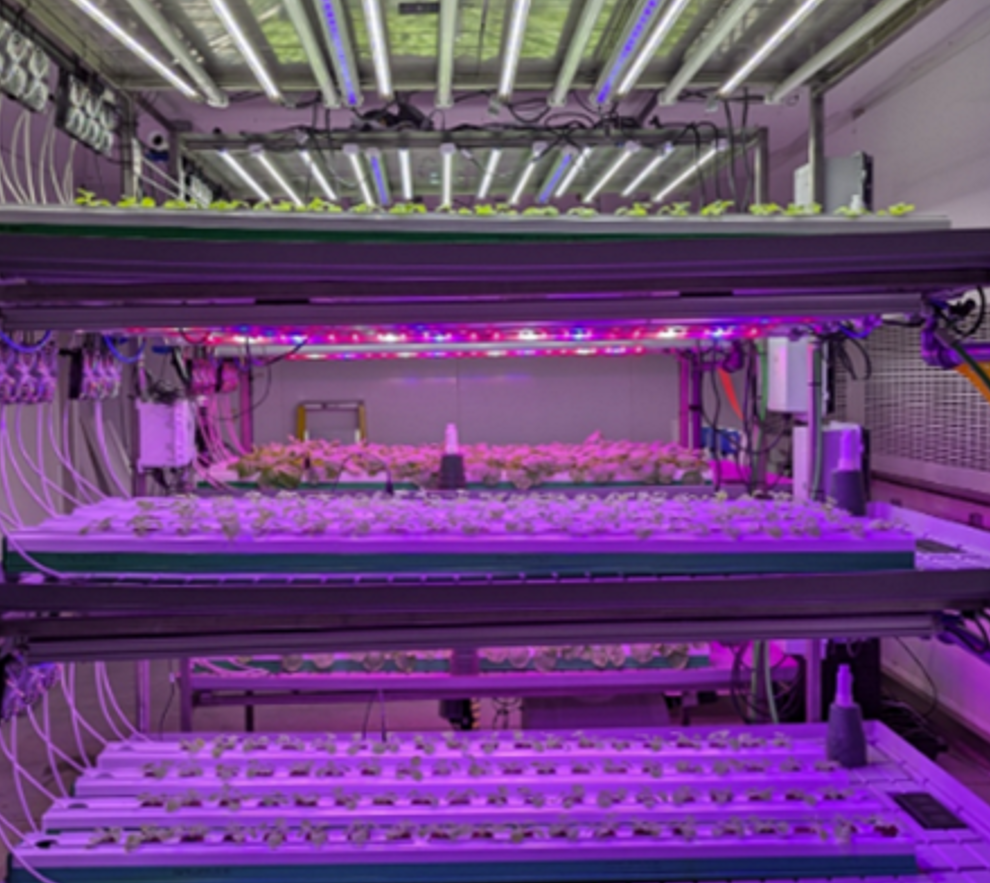
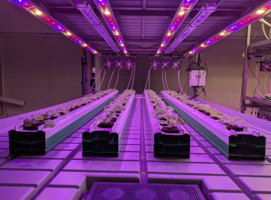
Beyond influenza, what’s your broader vision?
Frédéric Ors: “Plants represent a new biomanufacturing platform—capable of producing pharmaceutical proteins, but also proteins for industrial, veterinary, cosmetic, and even food-related uses. There’s also huge potential in personalized medicine—such as antibody cocktails tailored to individuals, or proteins that can’t be made in animal cells due to toxicity. We’re not looking to succeed with influenza and then sell the company—we’re here to build something scalable and lasting. As a small company, we know we can’t do it all ourselves. That’s why partnerships are key to our strategy. This year, we expect to announce at least two collaborations outside the pharmaceutical sector. In veterinary medicine, for example, the potential is enormous.”
What other types of products could be made using plants?
Frédéric Ors: “Many. These vaccines are free of animal products and inexpensive to produce. Beyond that, we’re looking at enzymes for industrial use, proteins for cell culture media (which currently come from animal sources), and ingredients for cosmetics and food safety. There are also certain proteins that can’t be made in animal cells because they’re toxic to them. Plants can produce those. This opens doors to markets that don’t yet exist.”
Is there much competition in this space?
Frédéric Ors: “There is, particularly in Asia and the U.S., with growing interest in China and South Korea. Plant-derived therapeutics and remedies are deeply rooted in Chinese culture, so I expect strong competition there. But since we acquired the assets of Medicago, the former global leader, we’ve taken the lead ourselves.”
Does this meet a societal demand for greater vaccine acceptance? We’ve seen mistrust in the U.S. toward vaccines.
Frédéric Ors: “Absolutely. At first, the focus was speed and cost. But now, even our government recognizes the value of plant-based, vegan vaccines. In a climate of vaccine skepticism—especially in places like the U.S.—that label can help with acceptance and trust.”
Could all vaccines eventually be made from plants?
Frédéric Ors: “Maybe not all, but certainly more than just for influenza. The biggest barrier was that when Medicago started, none of the necessary tools existed—no regulatory standards, no production equipment, no defined processes. That’s no longer the case. With one license already granted and another product heading into Phase 3, the path is clearer. Guidelines now exist in Canada, the U.S., and Europe, making it easier for others to follow.”
What does vaccine production require in terms of equipment?
Frédéric Ors: “The initial plant-growth phase is done via vertical farming, which can be set up anywhere, regardless of climate. The bacterial programming—using Agrobacterium to introduce the vaccine gene—is simple microbiology. This takes place in small fermenters. The unique part is what we call “leaf infiltration”: plants are dipped into a liquid solution by robots, a brief vacuum is applied, and then the plants go back into vertical farming units. After six days, we extract and purify the protein, using standard biotech processes.”
What about storage and transportation?
Frédéric Ors: “The vaccine is protein-based, so it can be stored in regular refrigerators—no ultra-cold storage needed. A major future advantage is that vaccine production occurs in the leaves, which can be flash-frozen in food-grade tunnels—similar to frozen vegetables. This allows flexibility: leaves can be grown in one location and purified elsewhere. It’s ideal for countries with partial infrastructure, offering decentralization without compromising quality.”
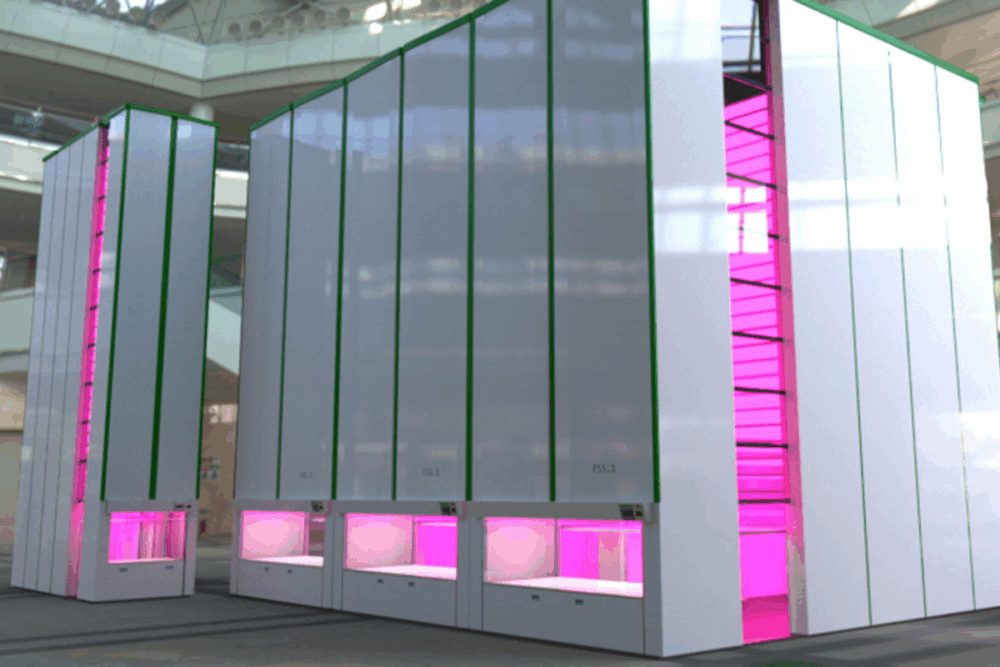
Is it still difficult to replicate this model globally?
Frédéric Ors: “Today, yes. The platform is still maturing. But in 10 years, we expect the technology to be adopted more widely. That’s our vision: global access, with small-scale, locally adapted production facilities supported by international partnerships.”
How long does it take for the plants to grow to usable size?
Frédéric Ors: “About 30 days.”
Is global scalability realistic in terms of resources?
Frédéric Ors: “Very much so. Plants are the most protein-productive organisms on Earth. In vertical farms, where you can grow in stacked layers, the output is enormous. A single leaf can produce hundreds of doses, compared to just one to three from a chicken egg.”
How does the cost compare to traditional flu vaccines?
Frédéric Ors: “Egg-based production is currently the cheapest. But we believe we can match that—while eliminating the associated carbon footprint, ethical concerns, and production limitations. And we’re offering a more effective vaccine. Eggs can only make flu vaccines, and only for six months a year. Our platform can be used continuously, and for multiple applications—including non-vaccine products between flu seasons.”
When do you plan to industrialize your flu vaccine?
Frédéric Ors: “Our goal is to commercialize it by 2030. That might sound far off, but considering that we’re redoing Phase 3 (and not starting from scratch), it’s actually fast. We already have safety and tolerability data from over 50,000 people, so we don’t need to repeat massive trials.”
Isn’t that timeline a bit long? People remember how fast things moved during COVID.
Frédéric Ors: “Yes, but we must be cautious. Vaccines are given to healthy people, and long-term safety matters. Some effects might only show up after five or six years. So yes, we want to move quickly—but not at the expense of safety. The emergency model used during COVID was necessary—and it saved lives—but it shouldn’t be our standard approach outside of crises.”
Could this technology improve access to vaccines in lower-income countries?
Frédéric Ors: “Yes. It’s a simpler, more flexible platform. Growing plants is far easier than running egg-based or cell culture systems. While purification still requires standard biotech processes, those are already part of vaccine production anyway. Once a first product is approved and commercialized, many countries could realistically consider adopting this model. It doesn’t require massive poultry operations—just a small area for plants. That’s a real game-changer for equitable access.”
